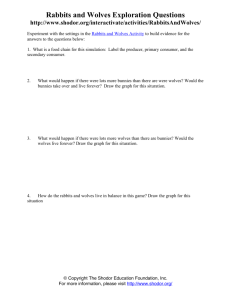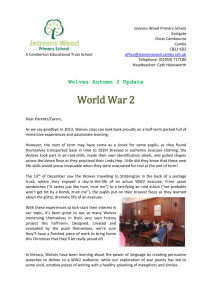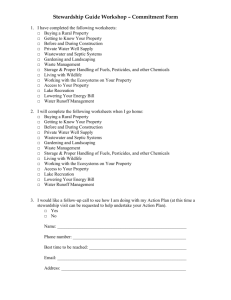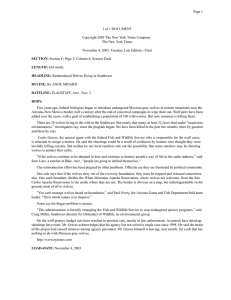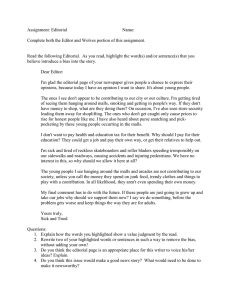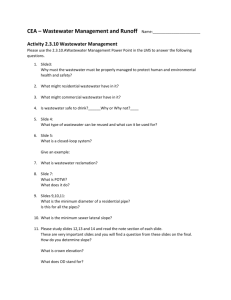Water & Wastewater Treatment Homework: Lafayette College
advertisement
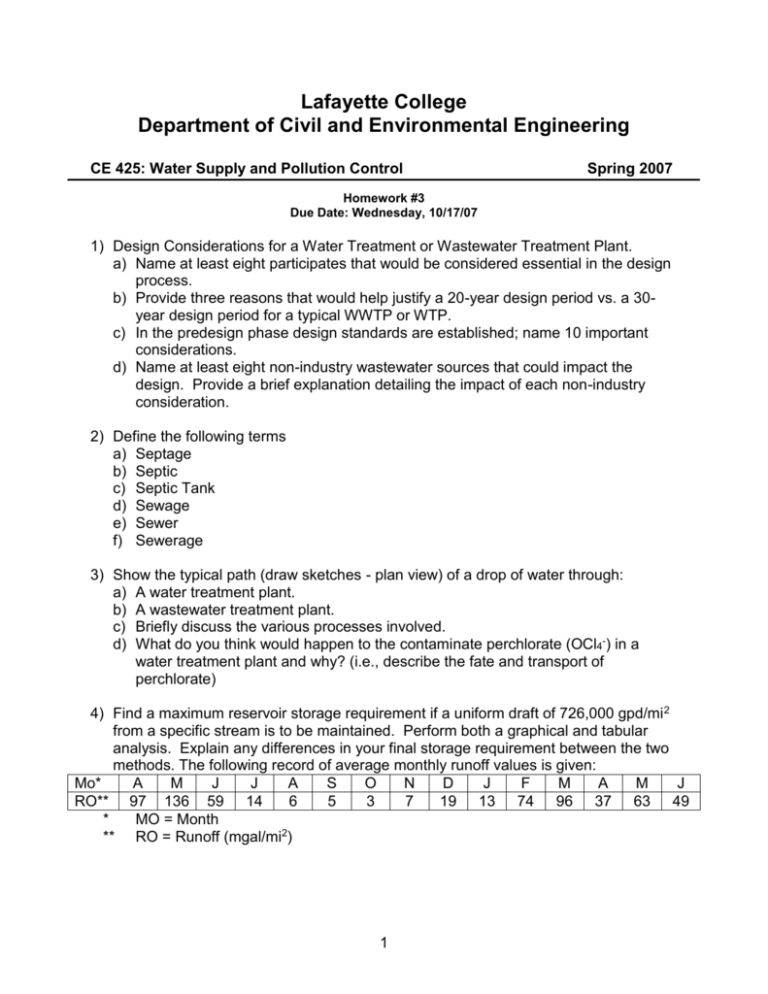
Lafayette College Department of Civil and Environmental Engineering CE 425: Water Supply and Pollution Control Spring 2007 Homework #3 Due Date: Wednesday, 10/17/07 1) Design Considerations for a Water Treatment or Wastewater Treatment Plant. a) Name at least eight participates that would be considered essential in the design process. b) Provide three reasons that would help justify a 20-year design period vs. a 30year design period for a typical WWTP or WTP. c) In the predesign phase design standards are established; name 10 important considerations. d) Name at least eight non-industry wastewater sources that could impact the design. Provide a brief explanation detailing the impact of each non-industry consideration. 2) Define the following terms a) Septage b) Septic c) Septic Tank d) Sewage e) Sewer f) Sewerage 3) Show the typical path (draw sketches - plan view) of a drop of water through: a) A water treatment plant. b) A wastewater treatment plant. c) Briefly discuss the various processes involved. d) What do you think would happen to the contaminate perchlorate (OCl4-) in a water treatment plant and why? (i.e., describe the fate and transport of perchlorate) 4) Find a maximum reservoir storage requirement if a uniform draft of 726,000 gpd/mi 2 from a specific stream is to be maintained. Perform both a graphical and tabular analysis. Explain any differences in your final storage requirement between the two methods. The following record of average monthly runoff values is given: Mo* A M J J A S O N D J F M A M J RO** 97 136 59 14 6 5 3 7 19 13 74 96 37 63 49 * MO = Month ** RO = Runoff (mgal/mi2) 1 5) Problem 4.2 - Reynolds/Richards (Note: since the data for Part a is limited, consider the population increase based on a ratio of the years that are available) 6) A community has experienced the growth in population and water use shown. Estimate the population per capita water use, and total average daily water demand in the year 2010. Year 1950 1960 1970 1980 1990 Population 8,000 8,990 11,300 14,600 18,400 3 Average daily flow, m 2,270 2,720 3,630 4,790 6,600 7) Discuss how you would go about collecting data for an analysis of the water budget of a region. What agencies would you contact? What other sources of information would you seek out? 8) A community has a population of 200,000 in 1995 and it is expected that this will increase to 260,00 by 2010. The water treatment capacity in 1995 was 43 mgd. A survey showed that the average per capita water use rate was 180 gpcd. Estimate the community’s water requirements in 2010 assuming (a) no change in use rate and (b) a reduced rate of 160 gpcd. Will expanded treatment facilities be needed by 2010 for condition (a)? For condition (b)? 9) A population of spotted wolves lives on the mountain Hesperides. There were 26 wolves in the year 2054 and 54 wolves counted in 2079. Assuming exponential growth, what is the net growth rate constant? 10) For Problem 9, what will be the population of wolves in 2102? 11) Using the data presented in Problem 9, the Derived Logistic S Method, a net growth rate of 0.04 year-1 and a carrying capacity of 159, what will be the predicted population of wolves in the year 2102? 12) Using the General Logistic S Method and the Declining Rate of Growth Method determine the population in the year 2180 using the data on the following page. Provide comment on each method. SHOW ALL WORK! 2 Year 1900 1910 1920 1930 1940 1950 1960 1970 1980 1990 2000 2010 2020 2030 2040 2050 2060 2070 2080 2090 2100 Population 50000 55000 60000 70000 85000 105000 120000 150000 180000 230000 280000 330000 390000 460000 540000 640000 760000 860000 950000 1030000 1100000 3



